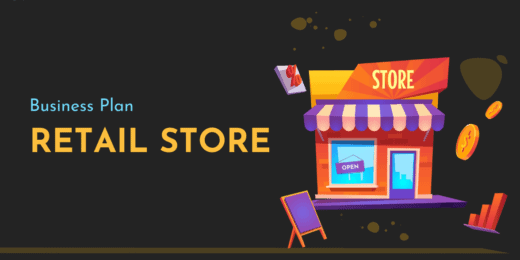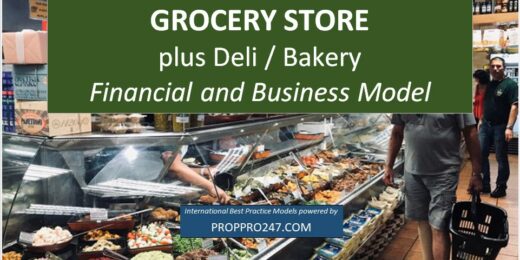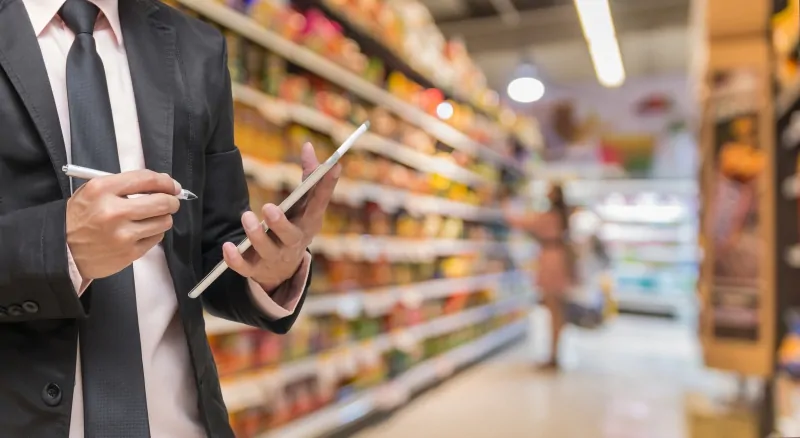FMCG (Fast-Moving Consumer Goods)
Whether you're a seasoned CFO or a financial analyst, these templates are crafted to help you make informed decisions quickly, optimize business operations, and drive growth—all with precision and confidence. Embrace the future of FMCG financial planning today and transform data into strategic insights!
CBD Personal Care Financial Model and Valuation Template
CBD Personal Care Financial Model and Valuation Template, a comprehensive…
CPG Company Financial Model and Valuation
Discover the CPG Company Financial Model and Valuation, an essential…
Manufacturing Sensitivity Analysis Template
Supercharge your manufacturing business with this versatile sensitivity table template:…
Retail Store Financial Model (FMCG/Clothing/Electronics, etc.)
Financial Model to calculate Profit/Loss, accurately forecast financial statements and…
Grocery Store plus Deli/Bakery 10 year Financial and Business Model
This Grocery Store 10-year Financial and Business Model also contains…
Franchisor Business – 3 Statement Model with Return Calculations & DCF
This model can be used to analyze the financial return…
Juice Production Business Plan Financial Model Excel Template
Check Juice Production Financial Model. Allows you to start planning…
Coffee Roasting Business Plan Financial Model Excel Template
Order Your Coffee Roasting Pro-forma Template. Solid package of print-ready…
Mini Grocery Store Financial Model – Dynamic 10 Year Business Plan
Financial Model providing a dynamic up to 10-year financial forecast…
Diaper Manufacturing Business Plan Financial Model Excel Template
Discover Diaper Manufacturing Financial Model. Excel - well-tested, robust and…
Clothing Manufacturing Business Plan Financial Model Excel Template
Shop Clothing Manufacturing Financial Model. There's power in Cash Flow…
Grocery Store Financial Model Excel Template
Try Grocery Store Financial Projection. Creates 5-year Pro-forma financial statements,…
Candy Store Financial Model Excel Template
Order Candy Store Financial Model Template. Sources & Uses, Profit…
Liquor Store Financial Model Excel Template
Get Your Liquor Store Financial Plan. Creates 5-year Pro-forma financial…
Bakery Financial Model Excel Template
Shop Bakery Budget Template. Solid package of print-ready reports, including…
Clothing Store Financial Model Excel Template
Get Your Clothing Store Budget Template. Creates 5-year Pro-forma financial…
Challenges in the Fast-Moving Consumer Goods Sector

In today’s rapidly evolving marketplace, the fast-moving consumer goods (FMCG) sector stands out as both a bastion of profitability and a beacon of relentless demand. Products that line the shelves of supermarkets and convenience stores worldwide—ranging from food and beverages to personal care items—constantly beckon consumers, promising both necessity and novelty. Yet, despite its robust growth prospects, this sector is not without its trials. Companies grapple with a myriad of challenges, such as fluctuating raw material costs, ever-changing consumer preferences, and the increasing pressure of sustainability demands. These obstacles require nimble strategies and innovative approaches to stay competitive and maintain profitability.
Amidst these turbulent waters, financial modeling emerges as a powerful tool to steer FMCG companies toward calmer seas. By harnessing the predictive power of advanced financial models, businesses can gain insightful forecasts and make informed decisions that align with market trends and operational constraints. As we delve deeper into the strategic applications of financial modeling, readers will discover how this technique is not just about maintaining equilibrium but about thriving in a sector where change is the only constant. Join us as we explore how embracing financial modeling can transform challenges into opportunities for growth and innovation in the FMCG landscape.
What are Fast-Moving Consumer Goods?
Fast-Moving Consumer Goods (FMCG) are products characterized by quick turnover, frequent consumption, and affordability. These goods include everyday essentials like food, beverages, personal care items, and household products purchased regularly due to their short shelf life and high demand. FMCGs represent the largest consumer goods segment and fall into the nondurable category, as they are consumed quickly and have a brief lifespan.
The consumer packaged goods (CPG) sector - another term for FMCG, plays a vital role in generating revenue, creating jobs, influencing consumer behavior, and driving innovation. They are integral to daily life, with their rapid movement through the supply chain ensuring constant availability to meet consumer needs. In 2023, the Consumer Packaged Goods (CPG) market was valued at approximately USD 2,208.85 billion. By 2024, this value is expected to increase to USD 2,290.58 billion.
Typical Characteristics of Products in the Fast-Moving Consumer Goods Sector
Products sold quickly at relatively low costs comprise the fast-moving consumer goods sector. Here are their main characteristics from the perspective of both the consumer and marketer:
From the Perspective of the Consumer
- Low Prices: FMCGs are usually inexpensive. Their low prices are partly due to the intense competition in the FMCG sectors, which leads to price sensitivity among consumers. Manufacturers and marketers keep prices competitive to maintain or increase market share.
- Minimal Engagement: Buying decisions for FMCGs generally requires little thought and effort. Since these products are regularly used and have low costs, consumers spend minimal time in decision-making and often stick to familiar brands.
- Regular Buying: Consumers buy FMCGs more often than other products because these goods include everyday items like food, toiletries, and household products. The necessity and high usage rate of these items compels frequent buying.
- Short Shelf Life: These products are designed for quick use and tend to have a short shelf life. This characteristic drives frequent repurchases. Examples include perishable food items and daily-use products like toothpaste and soap.
From the Perspective of the Marketer
- Large Quantities: The profitability of FMCGs often relies on selling large quantities because of their low individual profit margins. Marketers focus on high sales volumes to cover expenses and generate profit.
- Narrow Profit Margins: FMCGs typically have lower profit margins per unit than luxury or less frequently purchased items. Therefore, effective cost control and efficiency in production, distribution, and marketing are crucial to maintaining profitability.
- Rapid Stock Rotation: Due to consumers' rapid consumption and frequent purchases, FMCGs experience high inventory turnover. It means the stock is sold and replaced quickly, critical for maintaining product freshness, especially for perishables.
- Widespread Distribution: FMCGs require a widespread distribution network to efficiently reach a broad consumer base. These products are available in varied retail formats, from supermarkets to small local shops, ensuring they are easily accessible to all sections of the population.
These characteristics shape the strategies companies use to market and distribute FMCGs, aiming to meet consumer needs effectively while ensuring profitability and efficiency in operations.

The World’s Largest Consumer Packaged Goods Companies
The world's largest consumer packaged goods companies are powerhouses that produce and distribute products used daily by consumers around the globe. These companies typically operate in food and beverages, household and personal care products, and health items. Renowned for their brand strength, extensive distribution networks, and massive sales volumes, the major players are:
- Nestlé: Swiss multinational Nestlé is the largest food company in the world, known for its extensive product portfolio that includes baby food, bottled water, cereals, coffee, and more.
- Procter & Gamble: American multinational Procter & Gamble specializes in a wide range of personal care and hygiene products, cleaning agents, and pet foods.
- PepsiCo: PepsiCo, based in the U.S., is a leading global food and beverage company famous for its soft drinks, snacks, and other products, such as Pepsi, Lay's, and Quaker.
- Unilever: Anglo-Dutch multinational Unilever produces a diverse array of consumer goods, including foods, beverages, cleaning agents, and personal care products, noted for brands like Dove and Ben & Jerry's.
- B. InBev: Belgian company A.B. InBev is the world's largest brewer, known for brands such as Budweiser, Corona, and Stella Artois.
- L'Oréal: French cosmetic giant L'Oréal focuses on beauty and personal care products ranging from makeup and skincare to hair care.
- Coca-Cola: Coca-Cola is an iconic American multinational beverage corporation celebrated for its flagship product, Coke, and a wide variety of other soft drinks.
- Mondelez International: U.S.-based Mondelez International is known for its snack foods, confectioneries, and beverages, with popular brands like Oreo and Cadbury.
- Kraft Heinz: American food company Kraft Heinz is renowned for its extensive range of processed foods, including ketchup, sauces, and packaged meals.
- Heineken: Dutch brewing company Heineken is globally recognized for its premium lager beer and other beverage products.
- Kellogg's: Kellogg's, headquartered in the U.S., is famous for its breakfast cereals and convenience foods like cornflakes and Eggo waffles.
The world's largest consumer packaged goods companies focus on innovation and efficiency in manufacturing, marketing, and supply chain management to meet consumers' evolving preferences. Their scale allows them to influence global market trends and adapt swiftly to changing economic environments, ensuring their enduring presence in the lives of millions.

Examples of Fast-Moving Consumer Goods
The examples of fast-moving consumer goods can be divided into three categories:
Durable Goods
Durable goods are generally characterized by their quick consumption and perishability. However, in this sector, durable goods refer to items typically used for extended periods before disposal - generally around three years or more. These include electronic gadgets, household items, and kitchen appliances. In FMCG terms, these goods have a longer lifecycle and are not purchased as frequently as other FMCG products.
Non-Durable Goods
Non-durable goods are the core of FMCG and include items that are consumed quickly and need to be purchased regularly. These goods are typically perishable, with less than three years of shelf life. They include food & beverages, over-the-counter drugs, toiletries, and other consumables. The high turnover rate of non-durable goods leads to frequent repeat consumer purchases. Examples include milk, snacks, and personal care items like shampoo and soap.
Services
In the FMCG sector, services refer to intangible products consumed that cannot be owned as physical goods. These include services related to FMCG products, such as repairs, maintenance, appliance installation, or support services for tech gadgets. Additionally, they might consist of delivery services for grocery products or subscription services that ensure regular delivery of FMCG products to consumers.
These categories under the examples of fast-moving consumer goods help us understand the different types of products and services within the FMCG sector and how companies approach marketing and sales strategies for each. The main challenge for FMCG companies across these categories is managing the supply chain efficiently to meet the high turnover rate of products and services.

Obstacles in the Fast-Moving Consumer Goods Sector
The Fast-Moving Consumer Goods (FMCG) sector is highly dynamic, characterized by rapid changes and intense competition. Navigating this industry involves overcoming various obstacles, from changing consumer preferences to regulatory challenges and sustainability demands.
Changing Consumer Preference
The FMCG sector frequently faces the challenge of rapidly changing consumer preferences. Trends can shift swiftly due to factors like health awareness, technology, and social influence, requiring companies to adapt quickly. This agility is essential to stay relevant and competitive, as failing to align with consumer expectations can lead to decreased market share.
Inflation
Inflation affects the FMCG sector by increasing the cost of raw materials, production, and logistics. It can force companies to raise their prices, potentially reducing consumer demand if the price increase is significant. Managing these costs without sacrificing quality or consumer satisfaction is a major challenge.
Sales Automation
Implementing sales automation technologies presents both an opportunity and a challenge. While automation can improve efficiency and accuracy in sales processes, integrating these technologies can be costly and complex. Training staff to effectively use new systems and ensuring the technology aligns with the company’s sales strategies is also challenging.
Supply Chain Management
Effective supply chain management is critical in the FMCG sector to ensure that products are delivered from suppliers to consumers efficiently and cost-effectively. Challenges include managing supplier relationships, forecasting demand accurately, and minimizing disruptions to the supply chain. Any inefficiencies can lead to increased costs and inventory issues.
Sustainability Demands
Consumers and regulators are increasingly demanding that companies adopt sustainable practices. It includes reducing carbon footprints, minimizing waste, and using sustainable materials. These changes often require significant investment and innovation. While they can improve a brand’s image and compliance with regulations, they also present a financial and operational challenge to implement.

Harnessing Financial Tools to Overcome Obstacles in the Fast-Moving Consumer Goods Industry
In conclusion, while inherently profitable due to its essential nature and consistent demand, the FMCG sector faces significant challenges, such as fluctuating commodity prices, intense competition, and shifting consumer preferences. These challenges necessitate adept management and strategic foresight to maintain profitability and market share. To navigate these hurdles effectively, FMCG companies must leverage advanced financial tools.
Financial modeling can be a crucial tool for addressing the myriad challenges in the FMCG sector by enabling companies to simulate various business scenarios and predict outcomes. By incorporating real-time data and variables such as commodity prices, consumer demand, and logistical costs into dynamic financial models, companies can forecast future revenues, assess the impact of strategic decisions, and optimize pricing strategies. It helps make informed decisions, manage risks more effectively, and maintain profitability in a competitive market. Additionally, these models can aid in capital allocation, ensuring resources are invested in the most impactful areas, such as innovation or market expansion, further enhancing a company’s resilience and adaptability in the fast-moving consumer goods industry.






















